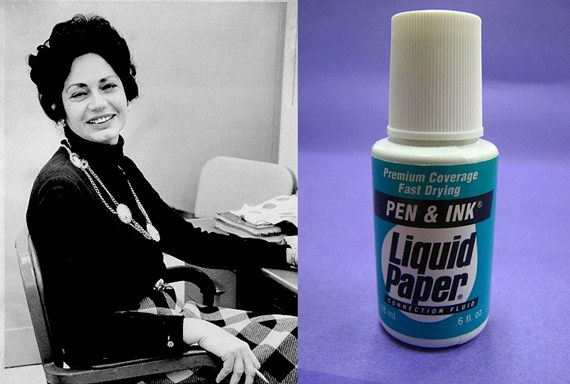Bette Nesmith: The female inventor who created the Liquid Paper
Bette Nesmith, who worked as a secretary in the 1950s, had great trouble correcting the mistakes she had made in her typed writing, and spent a lot of time rewriting documents.

Bette Nesmith (1924-1980)
Bette Nesmith was born in 1924 in Texas, USA. Bette, who has an artist and business mother, learned to paint from her mother at an early age. Bette, who has a passion and talent for painting and sculpture, realizes that her passion for art at a young age is not enough to support her financially, and unfortunately she gives up this passion.
Bette, who dropped out of high school at the age of 17 and continued her education at secretarial school, marries her high school sweetheart, Warren Nesmith, at the age of 19. While waiting for her husband, who participated in World War II, she gives birth to a son named Michael. Her relationship with her husband, who returned from the war, did not go as she expected and they divorced in 1946. Financial difficulties begin for Bette, who has to raise her son alone. Trying to make money by doing many different jobs, Bette takes care of her son, earning $300 a month at the Bank of Texas, where she worked as a secretary in 1954. At that time, the most important skill for a secretary was to use the typewriter in the fastest and most accurate way. When Bette, who is not very good at typewriters, is also asked to use a new typewriter model with sensitive keys, her typing errors increase as she grows. Her art background shines a light on Bette, who is looking for a way to correct her mistakes. Seeing that many artists correct their mistakes by painting rather than erasing, Bette tries to use the same method for her own spelling mistakes.
Bette produces her first correction fluid from a quick-drying white paint mix. At first she does not tell anyone about the product; produces for its own use only. The fact that typos can be practically corrected is later heard by the other secretaries, and Bette begins to take orders from them. The interest of her colleagues in the mixture she fills in nail polish bottles in the kitchen of her house increases day by day. Bette, who spends all her time outside of work hours to develop the product, begins to develop the formula with a chemist. She goes to different cities on the weekends and tries to find a distributor for her product. It would then take him 1958 to establish her own company, as she could not pay the $400 patent fee for her product, which she called "Mistake Out."
In 1958, she is so devoted to her own business that she mistakenly signs an official paperwork she wrote at the bank as "The Mistake Out Company" and of course, she is fired soon after. Then, without wasting any time, she registered her product and changed the name of the product and established her company as "Liquid Paper Company".
Its product now attracts the attention of large companies: I.B.M. She goes to meet with General Electric and receives a large order from General Electric. Increasing orders cause the production to go out of the kitchen, to a 4-room house, and then to a large building in Dallas. Bette, who founded her own factory in 1968, now owns a multi-million dollar brand that produces 25 million bottles a year by 1975.
The difficulties in Bette's life, of course, do not end. Her second husband, Robert Graham, whom she married in 1962, becomes a voice in the management of the company. They filed for a contested divorce in 1975. In this process, her husband demands that Bette be kicked out of her company and not taken into the company building. Despite her husband, who sought to forfeit Bette's copyright by attempting to alter the content of the product, Bette eventually won the case and sold the firm to Gilette for $47.9 million in 1979.
Liquid Paper
For Bette, who is respected for her managerial personality as well as her invention, the quality of her product always comes before money. In addition, she founded the Betty Claire McMurray Foundation in 1976 and the Gihon Foundation in 1978 to support women entrepreneurs and artists, believing that women would bring a more humane perspective to male-dominated business life. She also establishes a library and a childcare center for the employees within the company in order to support her employees. A good manager and inventor, Bette died in 1980, leaving an international industry behind.
